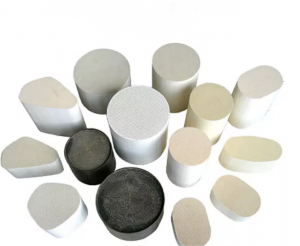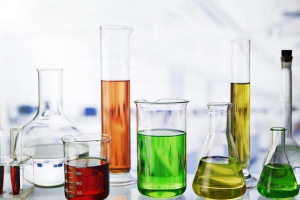The three-way catalytic converter is generally composed of shell, damping layer, carrier and catalyst coating.
The shell is made of stainless steel material to prevent the oxidation skin from falling off and causing blockage of the carrier. The material of the damping layer is generally expansion gasket or steel wire mesh pad, which plays the role of sealing, insulation and fixing the carrier to prevent damage caused by vibration, heat deformation and other reasons to the carrier. The expansion gasket is composed of expanded mica, aluminum silicate fiber and adhesive.
The carrier of three-way catalytic converter can be divided into ceramic carrier and metal carrier, and Jiangsu Dijana company is a high-tech enterprise engaged in the research of catalytic converter, as well as the development and manufacturing of automobile parts, with two kinds of carrier and three-way catalytic converter, DPF and other products, widely used in automobile emission control. Among them, the advantages of metal carrier are: fast heating up, fast cooling car start-up exhaust up to standard, large geometric contact area with the exhaust gas, conducive to catalytic response, reasonable design, simple structure, low processing and manufacturing cost, good working stability, low flow resistance, little impact on the performance of the engine, good heat conduction of the carrier, can delay the thermal aging of the catalyst.
Disadvantages are: poor heat resistance, low overload resistance: high cost, now the metal material is stainless steel corrugated metal plate, the price is more expensive, high temperature metal material polarity becomes larger, easy to absorb impurities in fuel.
In recent years, metal-supported catalysts, as a hot topic of catalytic surface modification in reactors, have attracted wide attention. It is composed of bioactive metal supported catalyst and coating material, with high activity and stability, can accelerate the reaction rate, improve the efficiency of catalyst, reduce energy loss, reduce the toxicity of reaction products, improve the performance of the reactor, extend the life of the catalyst.
The research of metal-supported catalyst coating mainly includes the selection of metal-supported catalyst and coating material, the research of metal-supported catalyst coating technology, the evaluation of coating effect, the optimization of coating structure, the improvement of coating material and so on.
First, metal-supported catalysts and coating materials should be selected according to reaction conditions to ensure that they have good corrosion resistance, thermal stability and oxidation resistance. The commonly used metal catalysts are platinum, cobalt, palladium, rhodium, iridium, zirconium, molybdenum, oium, etc., and the commonly used coating materials are alumina, silicon oxide, aluminum borosilicate, etc.
Secondly, the technology of metal-supported catalyst coating should be studied. In general, metal-supported catalyst coating can be achieved by sputtering, deposition or transition metal technology. Among them, sputtering technology can control the thickness and layer of catalyst film, and can be achieved at a lower temperature, but the sputtering technology is limited to gas or solvent soluble materials; The deposition technology can make the coating material completely deposited, the metal catalyst and the coating material completely fused, and the surface morphology of the catalyst can be controlled. Transition metal technology can produce good coating structure in the process of coating catalyst, but this technology is more complex, easy to cause cracks, affect the coating performance.
Post time: Feb-13-2023










